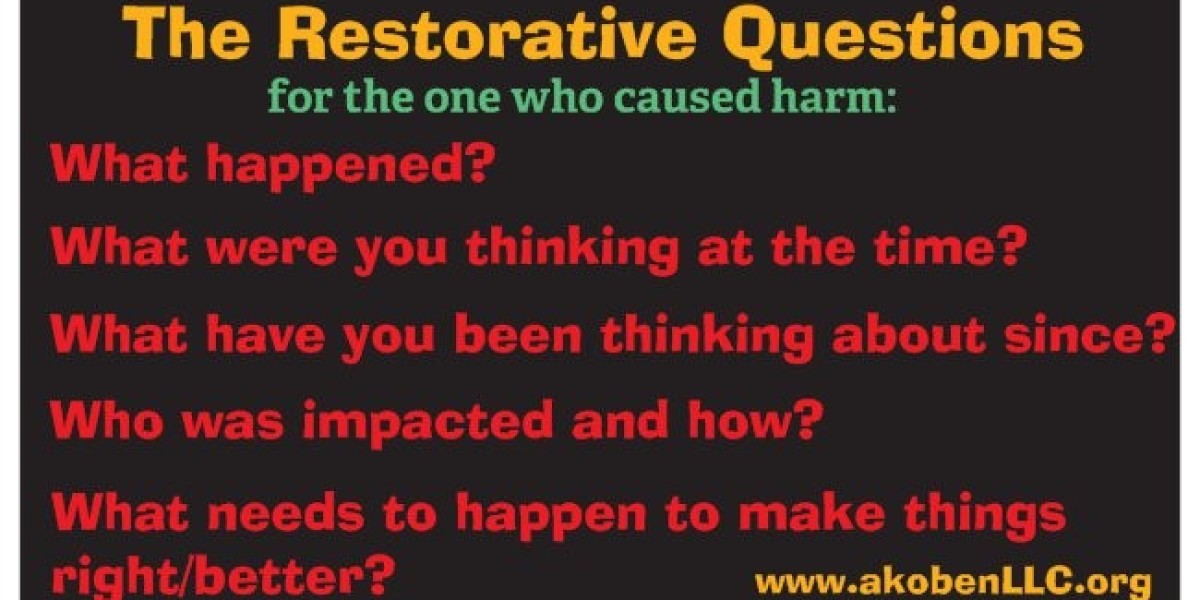Restorative discipline practices represent a revolutionary approach to addressing behavioral issues and conflicts in educational, organizational, and community settings. Unlike traditional punitive measures that focus on punishment and exclusion, restorative practices emphasize healing relationships, taking responsibility, and creating opportunities for growth and learning. This approach recognizes that discipline should be about teaching and restoration rather than simply imposing consequences that often fail to address underlying issues or repair harm caused to individuals and communities.
The fundamental principle behind restorative discipline lies in its focus on relationships and community building. When conflicts or behavioral issues arise, restorative practices bring together all affected parties to discuss what happened, who was affected, and how to move forward constructively. This process helps individuals understand the impact of their actions while providing opportunities for those who were harmed to express their feelings and needs. The approach builds empathy, personal responsibility, and stronger community connections.
Effective restorative discipline practices create environments where mistakes become learning opportunities rather than reasons for exclusion or punishment. Research consistently demonstrates that organizations implementing these practices see significant reductions in suspensions, expulsions, and repeat offenses while improving school climate, student engagement, and academic outcomes. The approach addresses root causes of problematic behavior while strengthening the social fabric of communities and organizations.
The Critical Need for Alternative Discipline Approaches
Traditional zero-tolerance discipline policies have created significant problems in schools and organizations, particularly affecting students of color and those with disabilities disproportionately. These punitive approaches often push individuals out of supportive environments precisely when they need the most support, creating pathways to negative outcomes rather than positive growth. The school-to-prison pipeline exemplifies how harsh discipline practices can derail lives and perpetuate cycles of disadvantage and exclusion.
The limitations of punitive discipline become evident when examining long-term outcomes. Suspensions and expulsions rarely improve behavior and often lead to academic disengagement, increased dropout rates, and involvement with juvenile justice systems. Students who are suspended are more likely to repeat grades, struggle academically, and face ongoing behavioral challenges. These outcomes highlight the urgent need for discipline approaches that address problems while keeping individuals connected to supportive communities.
Restorative discipline practices offer a compelling alternative that addresses harm while maintaining relationships and educational opportunities. Organizations implementing these approaches report improved climates, reduced conflicts, and better outcomes for all community members. The shift from punishment to restoration creates environments where individuals feel valued, supported, and motivated to make positive choices while taking responsibility for their actions and their impact on others.
Comprehensive Implementation and Practical Tools
Akoben.org provides essential resources for organizations seeking to implement effective restorative discipline practices. The restorative questions cards represent practical tools designed to facilitate meaningful conversations when conflicts arise. These wallet-sized cards offer structured questions for both those who have caused harm and those who have been affected, ensuring that restorative conversations address all necessary elements while remaining accessible to practitioners at all experience levels.
The implementation of restorative practices requires careful planning and comprehensive training for all community members. Organizations must shift from reactive punishment models to proactive relationship-building approaches that prevent many conflicts from escalating. This includes teaching conflict resolution skills, creating regular opportunities for community building, and establishing clear processes for addressing harm when it occurs. The transformation involves changes in policies, procedures, and most importantly, mindset and culture.
Successful implementation also requires ongoing support and resources to help practitioners navigate challenging situations effectively. The restorative questions cards provide immediate guidance during conflicts, helping facilitators ask the right questions to promote understanding, accountability, and healing. These tools ensure that restorative conversations remain focused on key elements while adapting to specific situations and contexts that arise in diverse organizational settings.
Leadership and Expertise in Restorative Practices
The successful implementation of restorative discipline practices requires knowledgeable leadership that understands both the theoretical foundations and practical applications of this approach. Dr. Malik Muhammad brings extensive experience in developing and implementing restorative practices across various organizational contexts, combining deep understanding of conflict resolution with practical skills in facilitating healing conversations. His expertise ensures that organizations receive comprehensive guidance in transforming their discipline approaches while maintaining their core values and mission.
Expert leadership in restorative practices involves understanding the complexities of human behavior, group dynamics, and organizational change. Skilled practitioners help communities navigate the transition from punitive to restorative approaches while addressing resistance and building buy-in among stakeholders. They provide ongoing coaching and support to ensure that restorative practices are implemented with fidelity and adapted to meet the unique needs of specific communities and contexts.
The expertise required for effective restorative practice implementation extends beyond knowledge of specific techniques to include understanding of trauma, cultural responsiveness, and social justice principles. Leaders in this field recognize that many behavioral issues stem from underlying trauma or systemic inequities that must be addressed alongside individual accountability. This comprehensive understanding ensures that restorative practices promote genuine healing and positive change rather than simply new forms of control or manipulation.
Specialized Applications for Youth and Educational Settings
Working with young people requires specialized understanding of developmental considerations and the unique ways that restorative practices can support healthy growth and learning. Iman Shabazz contributes valuable expertise in applying restorative discipline practices with youth, recognizing that adolescent behavior often reflects developmental needs, peer influences, and environmental factors that require thoughtful, supportive responses rather than harsh punishment.
Educational settings present particular opportunities and challenges for implementing restorative practices. Schools must balance academic goals with social-emotional learning while addressing diverse student needs and community expectations. Restorative practices in education focus on creating inclusive environments where all students feel valued and supported while learning essential life skills including empathy, responsibility, and conflict resolution. These skills contribute to both academic success and positive life outcomes.
The application of restorative practices with youth also involves engaging families and communities in supporting positive behavior and addressing challenges collaboratively. Young people benefit from consistent approaches across different settings, making it essential to build bridges between schools, homes, and communities. Restorative practices provide frameworks for these collaborations while respecting diverse cultural values and parenting approaches that contribute to youth development and success.
Understanding Emotional Responses and Building Resilience
Effective restorative discipline practices must address the complex emotional responses that arise during conflicts and challenging behaviors. The compass of shame provides a valuable framework for understanding how individuals respond to feelings of shame and inadequacy, which often underlie problematic behaviors. This model helps practitioners recognize different shame responses including withdrawal, attack self, attack others, and avoidance, enabling more effective interventions that address underlying emotional needs.
Understanding shame responses is crucial for creating restorative processes that promote healing rather than additional harm. When individuals feel overwhelmed by shame, they may respond in ways that appear defiant, aggressive, or disengaged, leading to escalating conflicts if not addressed skillfully. Restorative practitioners learn to recognize these patterns and respond with approaches that reduce shame while promoting accountability and positive change.
Building emotional resilience through restorative practices involves teaching individuals to recognize their emotional responses, understand triggers, and develop healthy coping strategies. The process helps people learn from mistakes while maintaining their sense of worth and connection to community. This approach prevents the cycle of shame and acting out that often characterizes traditional discipline approaches while building skills that support long-term success and positive relationships.
Long-term Impact and Community Transformation
Restorative discipline practices create lasting positive changes that extend far beyond individual incidents or conflicts. Organizations that fully embrace these approaches often experience fundamental shifts in culture, moving toward more collaborative, supportive, and effective communities. Staff and participants report increased satisfaction and engagement as they develop skills and relationships that support ongoing success and positive interactions.
The community-wide impact of restorative practices includes reduced conflicts, improved climate, and stronger relationships among all community members. When organizations prioritize restoration over punishment, they create environments where individuals feel safe to take risks, make mistakes, and learn from experiences without fear of harsh consequences. This supportive atmosphere promotes innovation, creativity, and authentic engagement that benefits everyone involved.
Measuring the success of restorative discipline implementation requires attention to both quantitative and qualitative indicators. Organizations track metrics such as suspension rates, repeat offenses, academic achievement, and attendance while also monitoring community climate, relationship quality, and participant satisfaction. The comprehensive impact of restorative practices demonstrates their value as investments in creating healthier, more effective communities that support positive outcomes for all members while addressing challenges constructively and compassionately.







